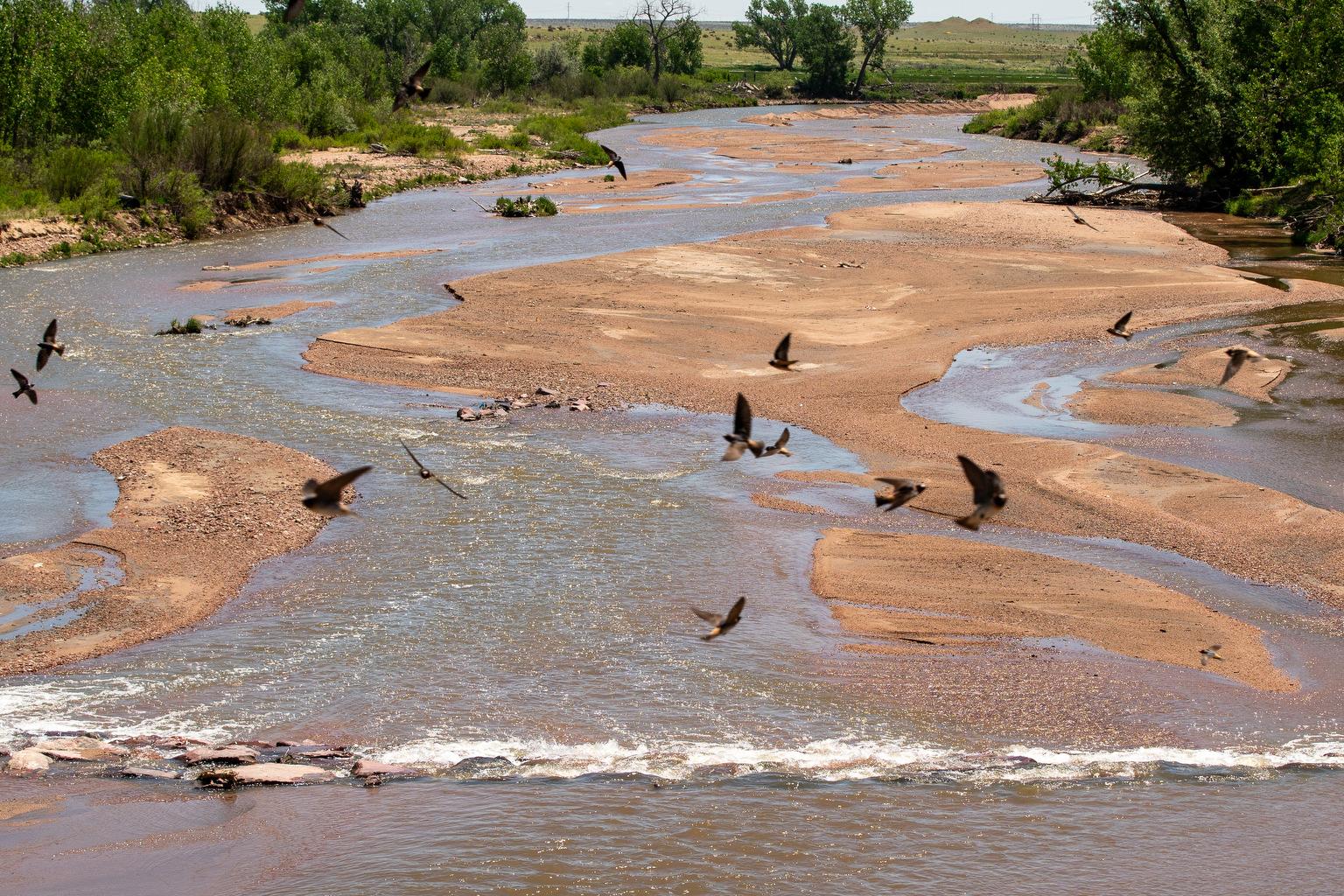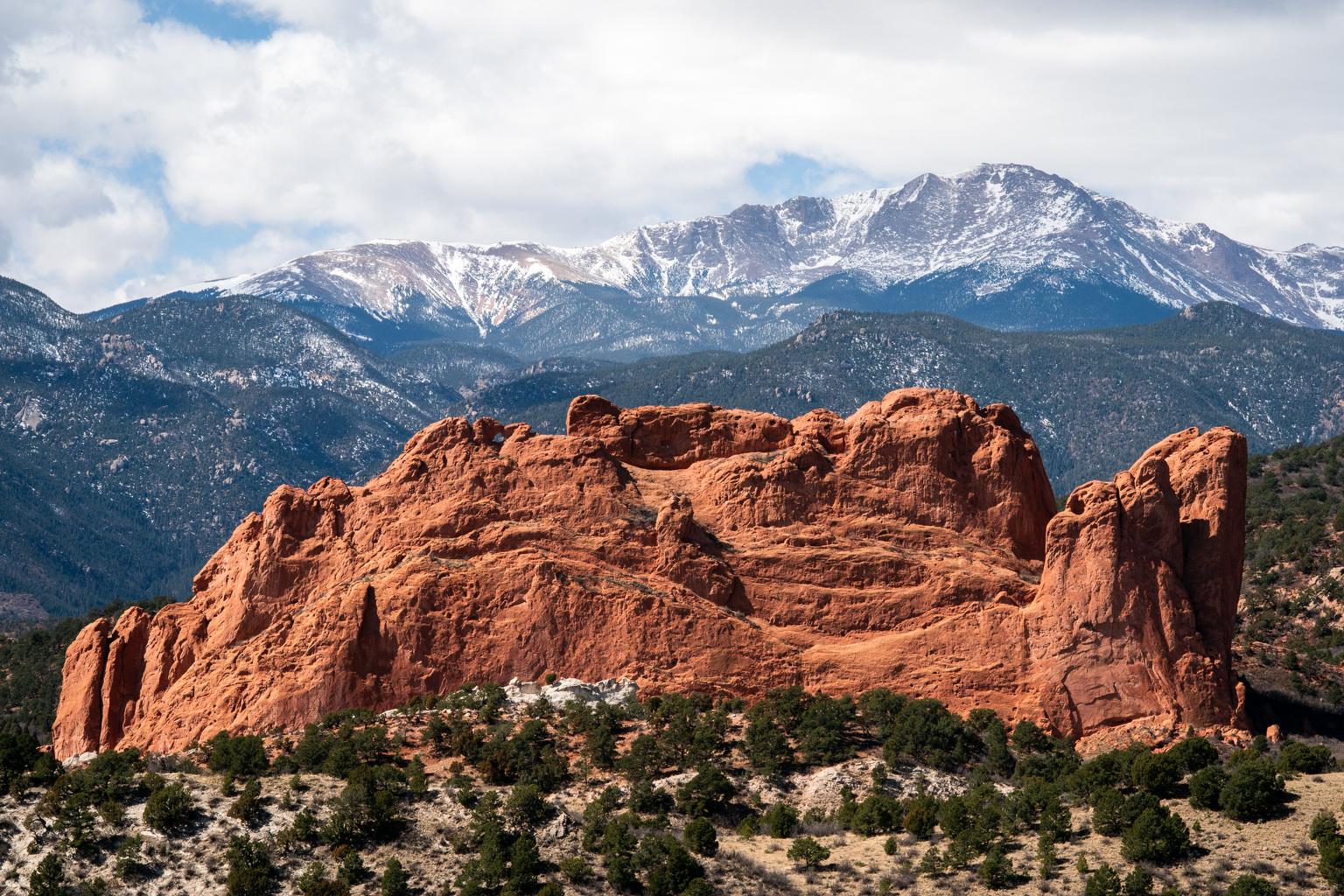When 3 million gallons of contaminated water blew out of an abandoned gold mine in the San Juan Mountains on Aug. 5 and made its way down Cement Creek into the Animas River, the news put communities in four states on alert.
Photos of the mustard-colored toxic plume made international headlines. When the Environmental Protection Agency said that one of its own crews had set off the disaster -- while attempting to clean up and eventually plug the mine in order to make it safer -- the scope of the event only grew more perplexing.
A review of both the timeline of recent events and the complicated history of mining in the San Juans reveals that while the EPA and its contractors triggered the Gold King blowout, the agency is far from the only party responsible for the accident.
- More: Timeline | History | Toxins | Impact | Accountability
Timeline: An EPA Plan Backfires
 Wednesday, Aug. 5: EPA sends a team of contractors and a supervisor to check on the Gold King Mine near Silverton. Water bearing toxins and heavy metals are backed up behind old timbers and other debris in the tunnel, the toxic water is leaking out, and the EPA crew aims to install a pump to draw out the water, then plug the mine for good.
Wednesday, Aug. 5: EPA sends a team of contractors and a supervisor to check on the Gold King Mine near Silverton. Water bearing toxins and heavy metals are backed up behind old timbers and other debris in the tunnel, the toxic water is leaking out, and the EPA crew aims to install a pump to draw out the water, then plug the mine for good.
The team apparently underestimates the volume of water and accidently breaches a debris pile that allows the pressurized, filthy water to spew out and down into Cement Creek, a tributary of the Animas River. Supervisor Hays Griswold tells the Durango Herald "there was no stopping it at any time," and all he could do was get his team out of the way.
Thursday, Aug. 6: As the mustard-colored waste becomes visible in the Animas and bears down on Durango, EPA admits that its crew was behind the blowout, and estimates the total spillage to be about 1 million gallons. The sight of the discolored river spreads far and wide on social media, and onto the front pages of national newspapers and newscasts.
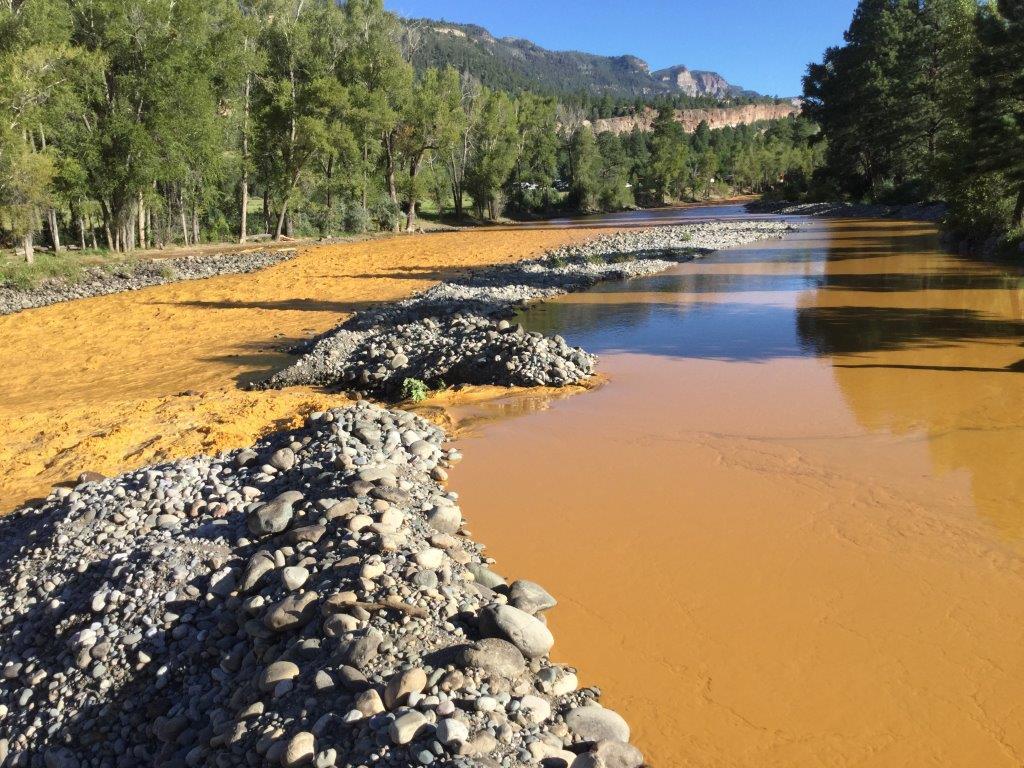
The plume reaches Durango by evening. The La Plata County Sheriff closes the Animas to recreational use, including rafting and fishing. Communities all along the plume's expected path in New Mexico, Arizona, the Navajo Nation and Utah begin to plan their response -- and criticize the EPA for not letting them know sooner about the blowout and its potential health implications.
Friday, Aug. 7: The Durango Herald calls the situation a "catastrophe." EPA begins rebuilding the settlement ponds at the mine entrance, begins to deploy advanced test equipment on the river and to conduct aerial flights along its course. It also keeps up a steady stream of mea culpas.
"We really believed it wasn’t as much water as we ended up seeing. As a result, some of our initial communications were not fully accurate,” says Shaun McGrath, an EPA administrator for the region. Adds Dave Ostrander, a regional EPA emergency preparedness director: "We typically respond to emergencies, we don’t cause them."
Saturday, Aug. 8: Colorado Parks and Wildlife, which had placed about a hundred fingerling trout in baskets along the river on Thursday, reports that just one has died so far. EPA reports that about 550 gallons per minute of mine waste water is now flowing from Gold King, down from 740 gallons a minute on Friday.
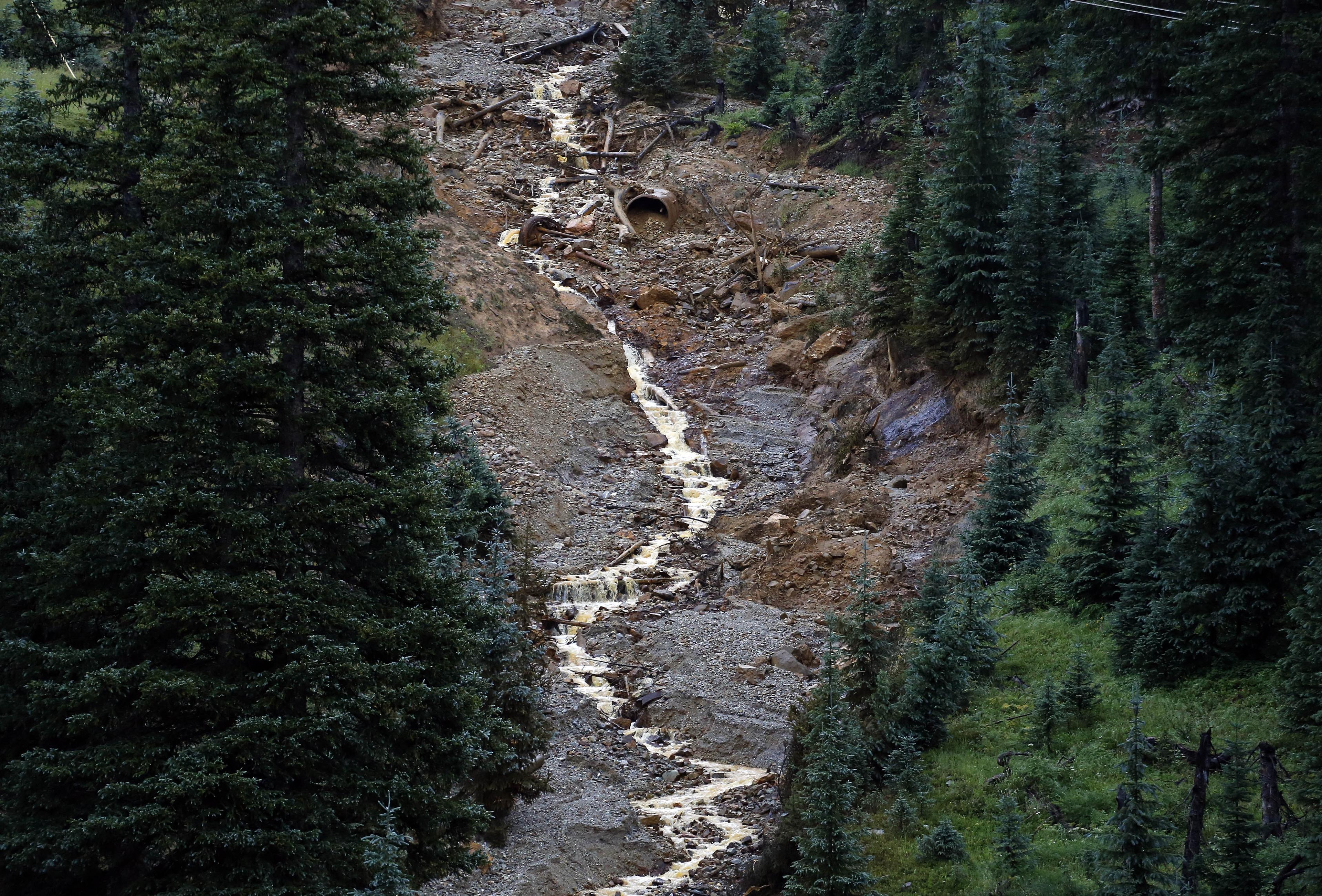
The toxic plume is moving at about 4 mph and reaches the confluence of the San Juan in Farmington, New Mexico. Aztec and Farmington both shut down their water intakes. Later Saturday, the waste reaches the Navajo Nation.
Sunday, Aug. 9: EPA revises its estimate of the discharge from the mine up from 1 million gallons to 3 million gallons, citing more precise U.S. Geological Survey measurements. Agency observers in aircraft flying from Farmington to Durango suggest the toxic plume is dissipating as it flows down the San Juan.
Monday, Aug. 10: Colorado Gov. John Hickenlooper makes an official disaster declaration, which channels $500,000 into response efforts. "We will work closely with the EPA to continue to measure water quality as it returns to normal, but also to work together to assess other mines throughout the state to make sure this doesn’t happen again," Hickenlooper says.
Conservation Colorado Deputy Director Carrie Curtiss puts voice to a common concern raised by the incident: "The Gold King spill is proof that these old, contaminated mines are disasters waiting to happen, and a hazard to the health of our rivers and the communities that depend upon them."
Tuesday, Aug. 11: Hickenlooper arrives in Durango and publicly takes on the EPA for what he considers a slow response, and because the agency wants the Animas closed until Aug. 17. McGrath asks the governor to stop talking about the river's health and let the agency finish its tests. "Nonsense," Hickenlooper replies.
EPA Administrator Gina McCarthy weighs in from Washington, D.C: "Our commitment is to get this right and protect public health. Thankfully, there have been no reported cases of anyone’s health being harmed."
Wednesday, Aug. 12: Durango is given the all clear to begin drawing and treating water from the Animas. McCarthy arrives in Durango to meet with local officials and trying to soothe frayed nerves among the EPA's critics. Hickenlooper is photographed in Durango drinking a bottle of water he's filled from the Animas.
Thursday, Aug. 13: McCarthy, now in New Mexico, says there will be a full internal and external investigation. A congressional committee has asked the U.S. Inspector General’s Office to look into what happened. Meanwhile, EPA says water quality in the Animas River near Durango is back to where it was before the spill.
Friday, Aug. 14: La Plata County Sheriff Sean Smith opens the Animas again to boaters, citing data from the Colorado Department of Public Health and Environment. The agency says "levels of contamination are below what would be a concern for human health during typical recreational exposure." Officials in northwestern New Mexico lift the precautionary ban on the use of private well water throughout the Animas River valley.
-- Hart Van Denburg
- More: Timeline | History | Toxins | Impact | Accountability
History: The Gold King Mine

The Gold King mine wasn't always the source point for an environmental disaster. It wasn't even always a mine. It was just a mineral outcropping that miner Olaf Nelson happened to notice and claim in 1887, when he was working at the nearby Samson mine. The new outcropping looked more promising than the vein network he'd been working on, so he staked a claim, then died four years later without ever developing the mine.
Willis Z. Kinney, an experienced mine manager in San Juan County, partnered up with two other investors and bought Nelson's mining claim from his widow in 1894. Then the Gold King Mining and Milling Company drove the tunnel that found a vein beating everyone's expectations. Today, that same tunnel has found national fame as the source point of the Animas River release.
The company patented their claim, turning the area from public to private land so they could extend the mining efforts. They also built a massive mill on the banks of Cement Creek below Gold King Mine. An advanced aerial tramway ferried ore between the two.
The richness of the find and the advanced industrial techniques employed there quickly made Gold King Mine one of the most important in the region. In 1902, British investors offered $4 million for the property but the Gold King Company turned them down.
If the 19th Century was a mining bonanza in San Juan County, the 20th has been a mining hangover. Operations at Gold King Mine ceased in 1923 -- just about 50 years after the San Juan Mountains opened to prospectors. Sunnyside Gold Corp. closed the final mining operations in the San Juan County in 1991. By that time, the area had become the largest untreated mine drainage in the state. Altogether, the Sunnyside mine group, which includes the Gold King Mine, produced $150,000,000 over its lifetime.
Between 1923 and today, the mine changed hands a number of times. The New York Times spoke with engineer Steve Fearn, who says he bought the mine in 1999, but couldn't pay the mortgage and was forced to sell to businessman named Todd Hennis.
Hennis is the current owner of Gold King, and president of San Juan Corp. He told reporters last week that backed-up wastewater from the nearby Sunnyside Mine caused the blowout. He called on Kinross--which took possession of Sunnyside in 2003--to install a water-treatment plant on the Cement Creek that could cost $20 million. But Kinross denies any physical or corporate connection to Gold King.
-- Sam Brasch
- More: Timeline | History | Toxins | Impact | Accountability
Mining: Why All The Water And Toxins?
 Why is there so much water in these gold mines? Around the turn of the century, mining technology improved such that tunnels reached farther and deeper into the mountainside. These longer tunnels intercepted groundwater, making drainage an issue.
Why is there so much water in these gold mines? Around the turn of the century, mining technology improved such that tunnels reached farther and deeper into the mountainside. These longer tunnels intercepted groundwater, making drainage an issue.
Gold King, about 10 miles north of Silverton, is right next door to other shuttered mines, like the Red and Bonita, and importantly, Sunnyside. There's been an ongoing argument about the source and connection of water buildup in these mines for decades, going back to when Sunnyside's owner dug a new access -- the American Tunnel -- to that mine.
Jonathan P. Thompson, a Durango journalist who’s covered mine reclamation, says that, "when the American Tunnel was built, it intercepted groundwater that was otherwise headed for the Gold King and other nearby mines, the Mogul and Red and Bonita. That caused the discharge from those mines to virtually dry up. Instead, it came out the American Tunnel at a rate of as much as 1,500 gallons per minute."
The American Tunnel was plugged when the Sunnyside Mine shut down. Soon after, water flow from the Gold King Mine increased. A 2008 SEC filing from one of the Gold King Mine's former owners, Colorado Goldfields, shows the company tried to pin the problem on Sunnyside. Colorado Goldfields was working with the state to “undertake reconnaissance and mitigate activities to hopefully prevent a potential 'blow out' of underground blockages at the Gold King Mine," the filing says.
As to why there are so many toxins in the water: As groundwater mixes with oxygen and iron sulfide, which is naturally present in the San Juans, it forms sulfuric acid. That then eats away at underground heavy metals including copper, lead, arsenic and zinc. Those materials then become suspended in the water in -- and flowing from -- the mines.
Ideally, the sludge is kept underground. “[S]eals are intended to provide a permanent solution to mining’s 100-year battle with water and drainage problems, both operational and regulatory,” says an exhaustive 2008 USGS study. Steven Way of the EPA described the strategy this way to the Durango Herald before the Gold King accident:
The idea behind a bulkhead is to return water to its natural path. When water can percolate through the soil and rock slowly, it carries much less metal down to the Animas River, Way said.
The EPA was planning to plug the Red and Bonita mine this summer. But it is connected to the Gold King underground and a new plug could’ve led to more water flow from the latter. So the agency tried to stabilize the Gold King to prevent just that. As we all know now, that plan didn’t work out.
-- Nathaniel Minor
- More: Timeline | History | Toxins | Impact | Accountability
Impact: Toxins And Rivers
 The Environmental Protection Agency has regulated mines since the 1970s, as part of the Clean Water Act. So modern mines are required to plan for treating any water.
The Environmental Protection Agency has regulated mines since the 1970s, as part of the Clean Water Act. So modern mines are required to plan for treating any water.
But abandoned mines are sites where minerals or ores were extracted before such permits. An abandoned mine may have an owner who was not responsible for the mining activities that occurred there.
When the state last prepared a list of priority abandoned mine restoration projects in 2012, it had a list of seven mines. The cost to repair and maintain each of those ranged from $50,000 to upwards of $1 million, based on figures from the Water Quality Control Division of Colorado Department of Public Health and Environment.
The most costly repairs were slated for the historic London mine. Reclamation projects have been occurring at the site for at least 15 years.
The priority abandoned mine lands report is normally produced every five years. However CDPHE released a map Friday with current abandoned mine project locations for the Upper Animas Basin and statewide.
The state doesn't get much money from the federal government to clean up these abandoned mines.
The program that administers water reclamation projects, Colorado's Nonpoint Source program, planned to use $1 million from the EPA for fiscal year 2015 "for implementation projects that restore impaired waters." And Colorado's Division of Mine Safety and Regulation gets about $2 million for mine safeguarding work from the Surface Mining Control and Reclamation Act.
However, the federal government is not the only source of money for these projects. Often they include some state funds and local funds as well.
For example, in one of the London Mine reclamation projects, near Leadville, the landowner contributed $16,661 and the Colorado School of Mines gave $9,240.
However, water reclamation projects don't only include repairing abandoned mines. They also include fixing water hurt by agriculture or road runoff, for instance. So not all of that $1 million from the EPA has to go to repairing water affected by abandoned mines.
How many miles of Colorado's rivers and streams are impacted by mining? Over 1,640 miles, according to calculations from CDPHE.
-- Megan Arellano
- More: Timeline | History | Toxins | Impact | Accountability
Accountability: Who Pays To Clean Up, And Why?
 When the EPA crew breached the debris dam inside the Gold King Mine, it did more than cause the spill. It also made the first rounds of the blame game relatively easy.
When the EPA crew breached the debris dam inside the Gold King Mine, it did more than cause the spill. It also made the first rounds of the blame game relatively easy.
The Clean Water Act and environmental rules usually protect the agency from liability. But those protections don't apply in instances of negligence or if the agency triggers a spill. That means the EPA -- and the taxpayers funding it -- are on the hook for damages resulting from the release.
It's a responsibility the agency has so far embraced. The EPA opened a claims process to compensate individuals for any losses resulting from the spill. They also agreed to reimburse states and other local governments. New Mexico has already set aside $1.25 million for cleanup. New Mexico Gov. Susana Martinez says she expects to reclaim every penny from the EPA.
Those promises might seem unfair to the American taxpayer. If a company had been responsible for the incident, the EPA might have levied fines or other penalties to cover the cost of the cleanup. But because the cop in this case committed the crime, everybody pays the price. However, given the region's history of mining pollution, it's clear the EPA is far from the only liable party. They are only the most obviously liable. When the EPA triggered the spill, it was playing its role in a decades-long effort to clean up after corporate mining.
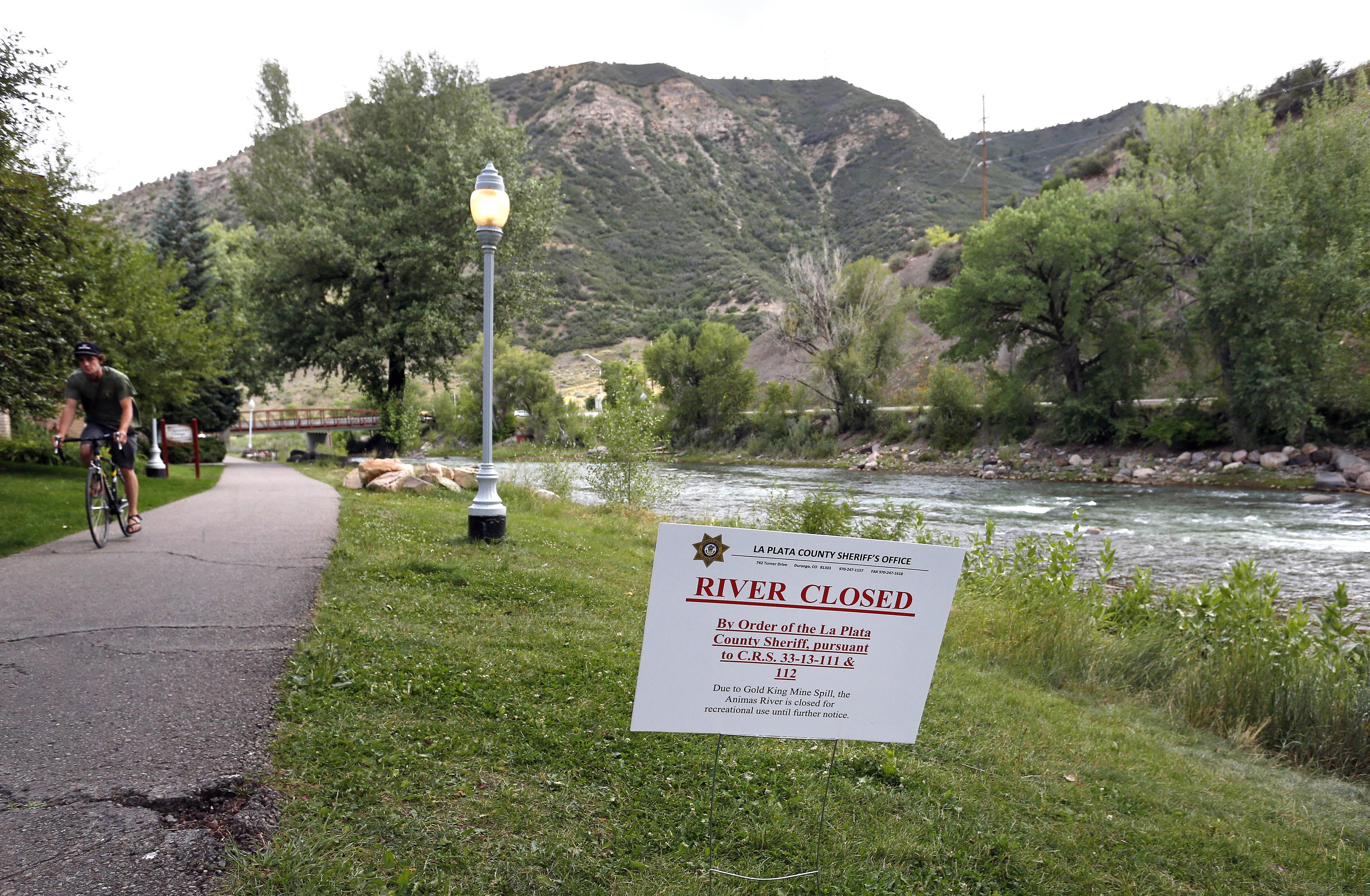
When Sunnyside closed, a key question was who would clean up the water flowing out of the mine and into Cement Creek. The company proposed a simple bulkhead or plug, but the state wouldn't allow that because in the long term, water would build up behind the plug until it reached other exits.
So the company agreed to a stricter plan in a 1996 consent decree that would eventually allow the company to stop running Cement Creek through a treatment plant. The company would bulkhead Sunnyside and reclaim others nearby. Meanwhile, the Animas River Stakeholder Group formed, two years earlier would focus on long-term mine reclamation and water quality.
That effort seemed to work while avoiding a Superfund designation. By the early 2000s, Sunnyside and ARSG had met the main conditions of the cleanup. Zinc levels down river had dropped by 50 to 75 percent. Water behind the bulkheads had also reached equilibrium. Fish appeared below Silverton for the first time in probably a century.
The improvement proved tenuous. Sunnyside turned over its water treatment plant and the cash to run it for a few years to Gold King Mining Company run by Steve Fearn--a local who wanted to revive mining in the area. Fearn also received ownership of the Gold King mine.
Those arrangements set the stage for the current disaster. But when then-owner Fearn's company went belly up, it took the water treatment plant with it. Meanwhile, the bulkhead at Sunnyside may have backed up contaminated water through cracks and fissures until toxic discharges started flowing from Gold King and other nearby mines. Since 2005, water quality at the confluence of the Animas and Cement rivers has declined significantly.
The deteriorating water quality got the recent attention of the EPA. In 2008, the agency started investigating whether to name the area a Superfund site, just as they had almost 20 years before. Facing objections from Silverton residents, they agreed to pay for mine reclamation.
Gold King was the not main focus of the work at the time of the spill. The EPA wanted to plug the Red and Bonita mine. Worried that if it plugged that mine, the effect might be to increase toxic flows of other mines, it set about the business of trying to stabilize the Gold King. And that's when the Gold King blow out happened.
Hennis, whose previous tussles with the EPA earned him a full profile in Westword, recently told the Denver Post that he would be happy to cooperate with the EPA on the Animas spill, but insists Sunnyside's bulkheads are to blame for the toxic discharges still flowing from his mines, and continues to insist that Kinross bear the cost of fixing the continuing pollution problem.
"Please, Kinross, step up," Hennis told the Denver Post. "Do a voluntary deal with the EPA. You need to set up a treatment plant to deal with the water impacts of the bulkheads inside the Sunnyside Mine."
So while the EPA will take the brunt for the blowout, responsibility for long-term effects is up in the air. Or, more precisely, lost in the water.
-- Sam Brasch
